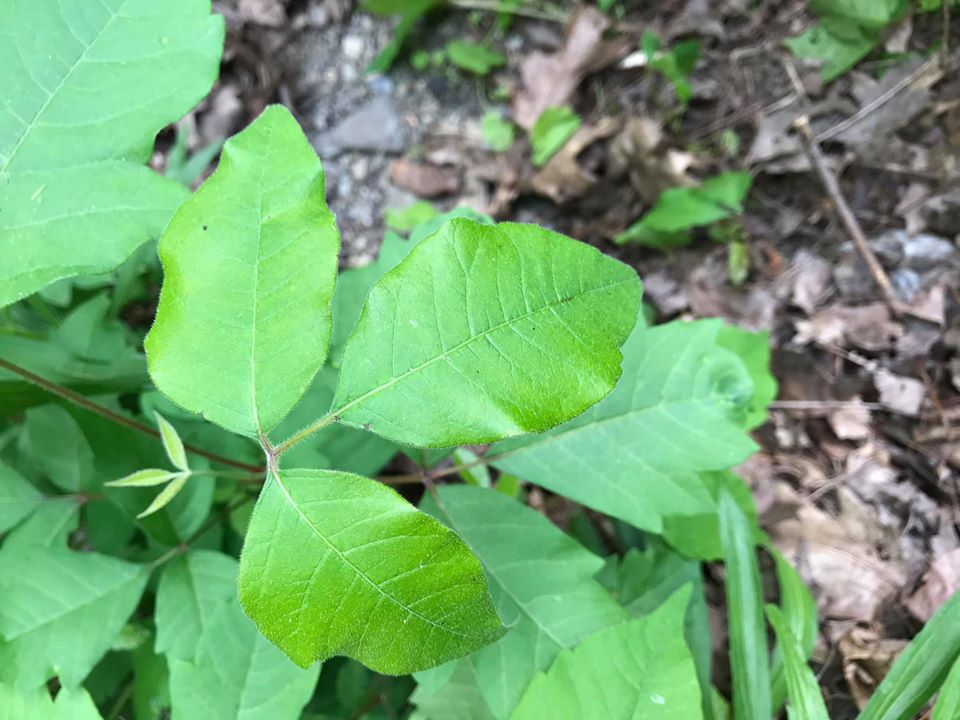
If there is one thing I fear when I’m in the outdoors, it’s not wild animals, it’s poison ivy. It is a plant designed by the devil. I have an extreme sensitivity to it and have even been hospitalized after exposure. It seems all I have to do is walk within a 20-foot radius of poison ivy and I have it. Naturally, you would think I would have the image of this burned into my brain. Nope. It still takes me by surprise when I’m hiking. Here is everything you need to know to recognize and avoid poison ivy, so it doesn’t take you by surprise. As well as how to treat it if it does.
Recognizing and Avoiding Poison Ivy

Where is poison ivy most likely to grow? Like the little demon it is, anywhere and everywhere. It can grow in both full shade and full sunlight, in the deep woods as well as open fields. This makes avoiding it difficult. Your next best step is to be able to recognize it on sight. easier said than done.
Here are some of its characteristics to help you recognize poison ivy:
- Poison ivy has leaves that grow in groups of three. (Remember the rhyme “leaves of three, leave it be.”)
- Poison ivy leaves are pointed at the tip.
- Poison ivy is varying shades of green in the spring and summer but turns red in the fall.
- Poison ivy can grow as both a vine as well as a shrub.
- In the Spring, Poison ivy flowers with small clusters of white berries.
Plant Identifying Apps

When in doubt there are some good apps or features that your phone may have, that can identify poison ivy for you. I use these all the time. I have seen poison ivy hundreds of times and I still blank when I see a three-leafed plant. I have iNaturalist download to my phone and if I see something that resembles poison ivy, I take a picture. If you have an Andriod phone, the Google photo app has an identification feature.
What If You Come in Contact?

Just last weekend, I was hiking with my family and as I was climbing over a log, my son says, “Hey Mom, I think that’s poison ivy on that log.” My first thought was, “F@#%!”. Sorry, pardon my French, I know this is a family site, but literally, that is what ran through my head. I have a bad history with poison ivy and I wasn’t ready to tangle with it again. (Of course, a smarter person would be more careful when hiking. Clearly, I am not that person.) So, I took a picture of the plant with my phone (I didn’t have any service at the time, so I couldn’t check in my plant identifier but I had the most dreadful feeling that he was right. He was.)
Typically, you want to wash the affected area with soap and warm water. However, we were a ways from home and there wasn’t a sink in sight. Fortunately for me, I had a bottle of hand sanitizer in the car. I washed all the areas that I believe had been exposed to poison ivy. In a pinch, alcohol-based hand sanitizers work.
Once we were home I washed all my clothing, including my hiking boots, and rewashed my hands and affected areas. I held my breath and waited 24 hours to see if any blisters showed up and I was in the clear.
What Causes the Rash?
There is oil in the poison ivy plant called urushiol. This oil can, unfortunately, be found on every part of the poison ivy plant (leaves, vine, roots, flowers, and berries.) Killing it may stop it from growing but you can still contract oil from the dead plant. If that isn’t enough, the oil can get onto your pet’s fur and be picked up by you from petting them. (been there, done that.) I told you this bugger was designed by the devil.
Treating a Rash
- Don’t scratch: This is almost impossible without the aid of over-the-counter skin creams, but good advice nonetheless, as scratching can lead to infection or scarring.
- Put a cold compress on your rash: Placing a cold washcloth over the rash can help provide some temporary relief.
- Take an oatmeal bath: Never sit in a hot bathtub. This will only make the itching worse. Use lukewarm water and colloidal oatmeal. There are also over-the-counter bath products you can use as well.
- Anti-itch creams or ointments: There are all sorts of anti-itch creams you can purchase such as cortisone cream and calamine lotion.
- Antihistamines: Over-the-counter antihistamines, such as Benadryl can help with some of the itching and inflammation.
When to Seek Medical Treatment
If your rash continues to get worse (especially after 2 weeks), is in your eyes or mouth, the rash is producing pus, or is off-color and tender, you should see a doctor.
Doctors can prescribe ointments to help with the itching and infection as well as steroids which go a long way to helping clear up the rash.
Also, never burn poison ivy. The oil can be transmitted via the ash. Causing not only skin rashes but serious breathing and medical issues should it be inhaled. You should seek medical attention immediately.
Don’t Let Poison Ivy Ruin Your Outdoor Fun
Poison ivy is pretty much the worse plant in existence but don’t let your fear of contacting it keep you from enjoying the outdoors. Just be smart and plan ahead. Try to keep something to clean it off your body in your vehicle, bathe your dog (who might brush past it) frequently, and remove and wash your clothes immediately after returning home from a hike.